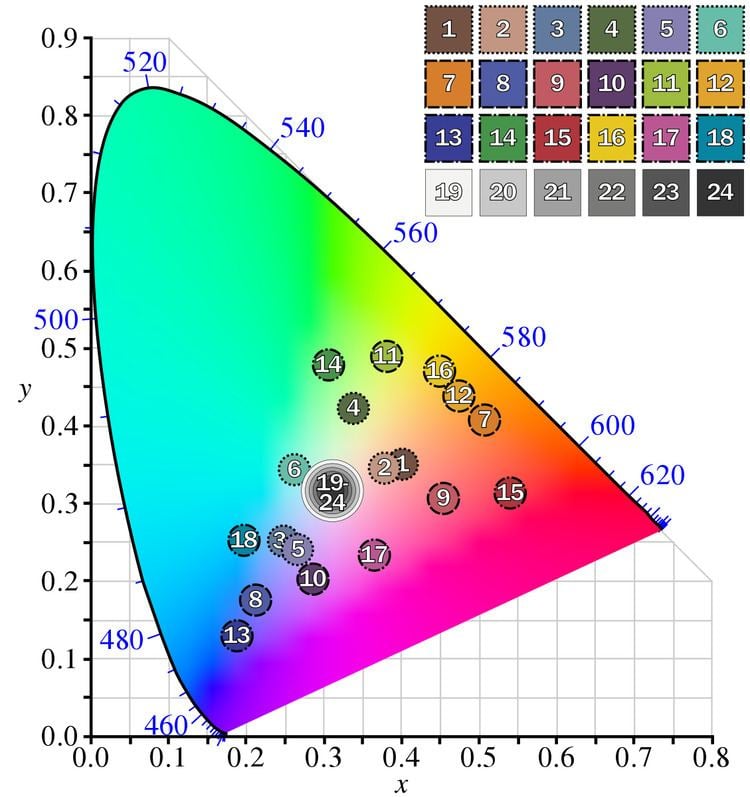 | ||
The ColorChecker Color Rendition Chart (often referred to by its original name, the Macbeth ColorChecker or simply Macbeth chart) is a color calibration target consisting of a cardboard-framed arrangement of 24 squares of painted samples. The ColorChecker was introduced in a 1976 paper by McCamy, Marcus, and Davidson in the Journal of Applied Photographic Engineering. The chart’s color patches have spectral reflectances intended to mimic those of natural objects such as human skin, foliage, and flowers, to have consistent color appearance under a variety of lighting conditions, especially as detected by typical color photographic film, and to be stable over time.
Contents
Design
The ColorChecker chart is a rectangular card measuring about 11 × 8.25 inches, or in its original incarnation about 13 × 9 in., an aspect ratio approximately the same as that of 35 mm film. It includes 24 patches in a 4 × 6 grid, each slightly under 2 inches square, made of matte paint applied to smooth paper, and surrounded by a black border. Six of the patches form a uniform gray lightness scale, and another six are primary colors typical of chemical photographic processes – red, green, blue, cyan, magenta, and yellow. The remaining colors include approximations of medium light and medium dark human skin, blue sky, the front of a typical leaf, and a blue chicory flower. The rest were chosen arbitrarily to represent a gamut "of general interest and utility for test purposes", though the orange and yellow patches are similarly colored to typical oranges and lemons.
Colors
The colors of the chart were described by McCamy et al. with colorimetric measurements using the CIE 1931 2° standard observer and Illuminant C, and also in terms of the Munsell color system. Using measured reflectance spectra, it is possible to derive CIELAB coordinates for Illuminants D65 and D50 and coordinates in sRGB.
Table from Field (1990); CIE data for Illuminant C from Poynton (2008).Use
Color targets such as the ColorChecker can be captured by cameras and other color input devices, and the resulting images’ output can be compared to the original chart, or to reference measurements, to test the degree to which image acquisition reproduction systems and processes approximate the human visual system’s. Because of its wide availability and use, its careful design, and its consistency, and because comprehensive spectrophotometric measurements are available, the ColorChecker has also been used in academic research into topics such as spectral imaging.
ColorChecker Digital SG
X-Rite also sells a 140-patch chart called the ColorChecker Digital SG, and is intended for automated use with computer software to characterize digital cameras and scanners.
